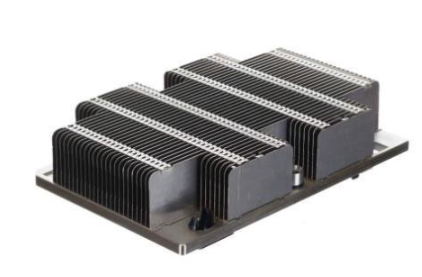Views: 161 Author: Site Editor Publish Time: 2024-01-26 Origin: Site

In electronic devices, effective heat dissipation is crucial for optimal performance and longevity. As critical components in managing device temperature, heat sinks come in various materials, each with unique properties. As manufacturers specializing in custom heat sinks, we often encounter the debate: Copper Heat Sink vs Aluminum. This article delves into the characteristics of both materials, aiming to guide users in making an informed choice based on their specific technology needs.

Heat sinks are essential for dissipating heat away from electronic components, preventing overheating, and ensuring efficient operation. They work by absorbing thermal energy from a device and dispersing it into the surrounding environment.
Copper: Known for its high thermal conductivity, copper is excellent at quickly absorbing and dissipating heat. It's denser and heavier, making it a top choice for high-performance heat sinks.
Aluminum: While aluminum has lower thermal conductivity than copper, it is lighter and more cost-effective. Its ease of extrusion makes it suitable for a wide range of heat sink designs.

Superior Thermal Conductivity: Copper's high thermal conductivity means it can handle higher thermal loads, making it ideal for high-performance applications.
Efficient Heat Dissipation: Copper heat sinks absorb and dissipate heat more quickly than aluminum, offering better cooling efficiency.
Weight: Copper is significantly heavier, which might be a drawback in applications where weight is critical.
Cost: It is also more expensive than aluminum, which can impact the overall cost of the device.

Lightweight: Aluminum is lighter than copper, which makes it a preferable choice for devices where weight is a concern.
Cost-Effective: It is less expensive than copper, offering a more budget-friendly option for heat sink manufacturing.
Easier to Shape: Aluminum can be easily extruded into complex shapes, providing versatility in heat sink design.
Lower Thermal Conductivity: While still effective, aluminum's thermal conductivity is lower than copper's, which might limit its use in high-heat scenarios.
The application's specific requirements should guide the choice between copper and aluminum heat sinks. Factors like heat load, space constraints, and weight limitations play a significant role in this decision.
For High-Performance Tech: In scenarios requiring rapid heat dissipation, such as in high-performance computing or gaming systems, copper heat sinks might be more suitable due to their superior thermal conductivity.
For Lightweight and Cost-Sensitive Applications: Aluminum heat sinks are often adequate for general electronics and are preferred when weight and cost are significant considerations.
Customization is critical in heat sink manufacturing. Both copper and aluminum offer flexibility in terms of design, but their distinct properties can influence the final product's efficiency and suitability for specific applications.
Copper Customization: Copper heat sinks can be tailored for applications needing aggressive cooling solutions. Techniques like skiving or embedding heat pipes can enhance their cooling performance.
Aluminum Customization: With aluminum, the ease of extrusion and machining allows for more intricate and diverse designs. This adaptability makes it ideal for a wide range of electronic devices.
Choosing between a copper and an aluminum heat sink often balances cost against performance requirements. While copper offers superior cooling, it comes at a higher price point, making aluminum a more budget-friendly option for less demanding applications.
Analyzing Thermal Requirements: Assess the heat dissipation needs of your device. High-performance devices benefit more from copper heat sinks.
Weighing Design Flexibility: Consider the design possibilities and whether the flexibility of aluminum aligns better with your product design.
Evaluating Cost Implications: Factor in the cost, not just of the materials, but also of the manufacturing process and how it impacts the overall budget.
In summary, choosing copper and aluminum heat sinks should align with your tech needs. Copper stands out in high-heat scenarios for its excellent thermal conductivity, while aluminum offers a lightweight, cost-efficient solution for less demanding applications. Making the correct choice involves balancing performance requirements, budget constraints, and design considerations to optimize your device's functionality and efficiency.